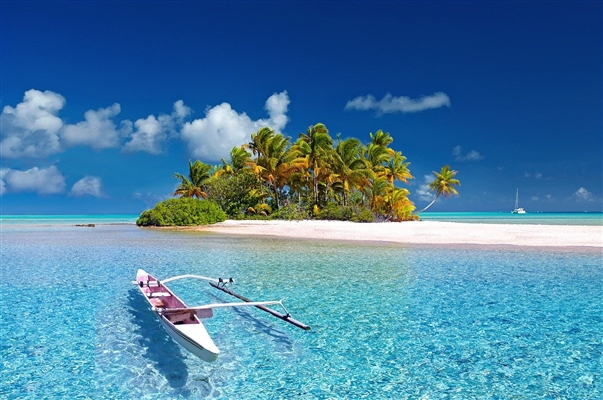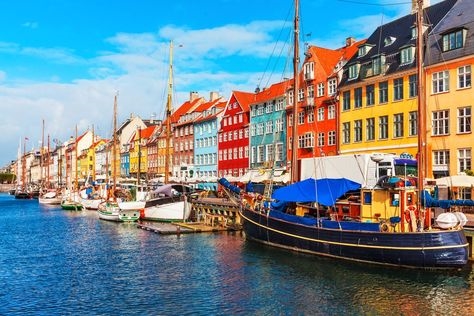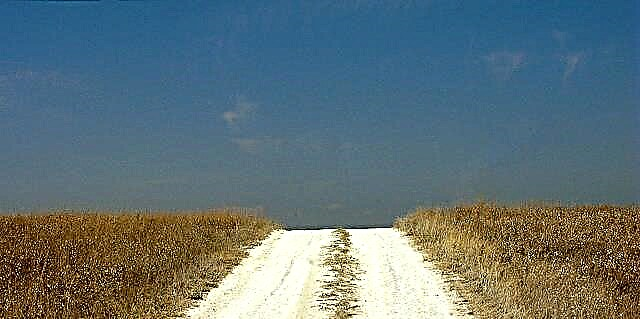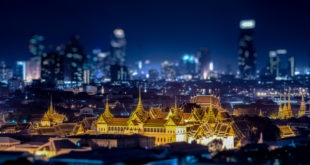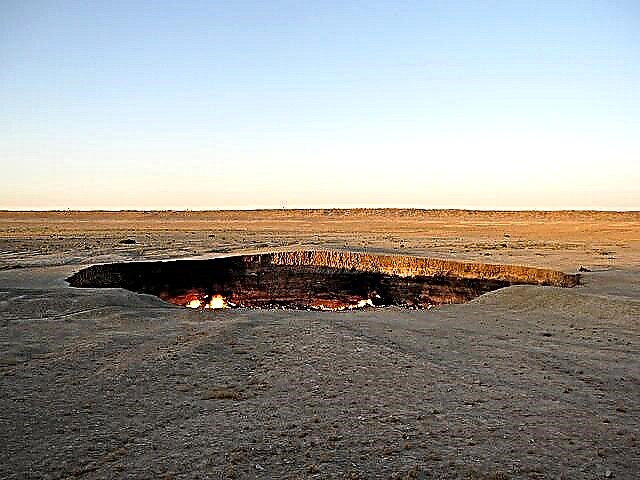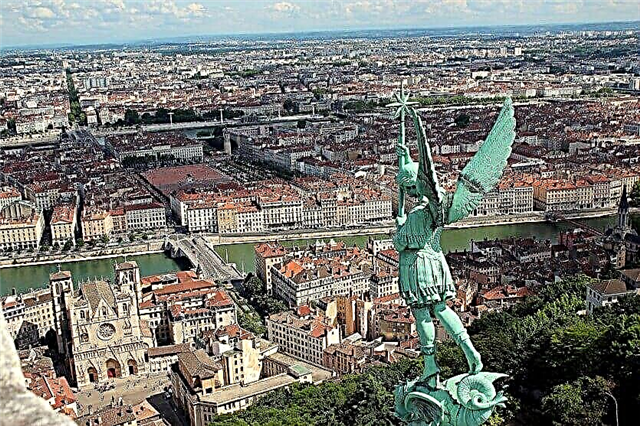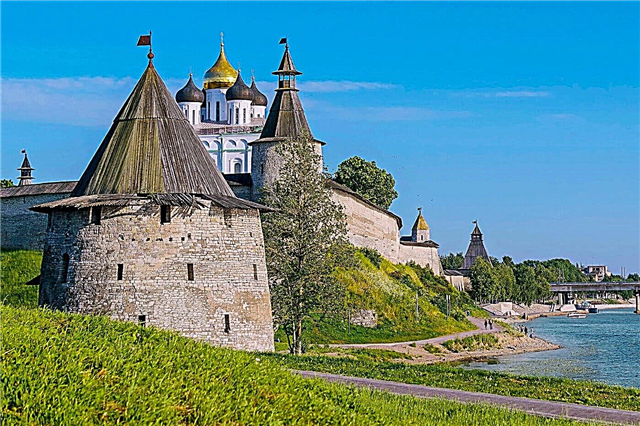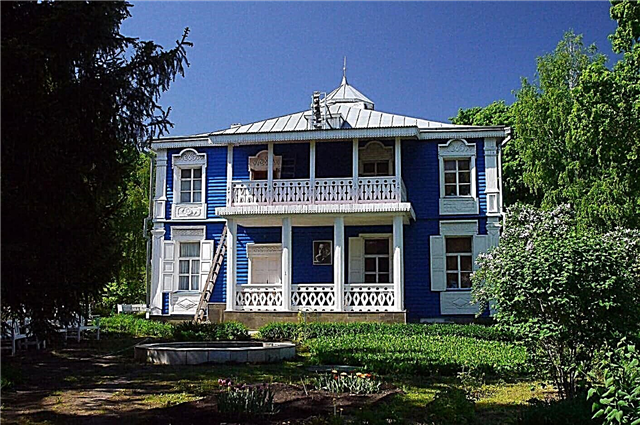The Tambov region, due to its place on the map of Russia and historical prerequisites, has practically no outstanding sights. However, those that are available in the complex paint a picture of an attractive region in terms of tourism. Tambov residents do not forget their fellow countrymen who glorified the region, therefore there are so many named museums with impressive funds by the standards of the province.
The Orthodox tradition is also strong, as evidenced by the monasteries and temples scattered throughout the region. Voroninsky Reserve, Lake Svyatovskoye and the Tzi River, along with other natural sites, will allow you to touch the local beauty. And the old estates complement the overall picture and will briefly transfer travelers to the past.
The most interesting and beautiful places in the region
List, photos with names and descriptions of the best attractions!
Museum-Estate of S. V. Rachmaninoff
Founded in 1982 in the village of Ivanovka, where the composer periodically lived and worked. Exhibits associated with Rachmaninov began to be collected back in the 60s. When the collection became impressive, it was given its own building and a sculptural portrait was discovered nearby. Since Ivanovka was destroyed in the 1920s, each building was restored separately. Music festivals are held here on a regular basis.

Voroninsky reserve
Located on the territory of two districts: Kirsanovsky and Inzhavinsky. It was founded in 1994 and covers an area of 10 thousand hectares. It is divided into clusters, which include separate natural boundaries and two large forests. Named after the river. Sightseeing: Lysaya Gora, 150-year-old willow grove, the spring of Seraphim of Sarov, which is considered a saint, etc. There are tourist routes 5 to 40 km long.

Trinity Cathedral in Morshansk
Built in the middle of the 19th century. During the construction process, financial difficulties arose, so there were breaks in work. The architectural style is classicism. During the Soviet period it was closed, its iconostasis was destroyed. Thanks to the museum staff, some of the shrines have been preserved. The restoration began in 1990. Eight years later, Patriarch Alexy II served the liturgy in the finished church.

The Aseevs' estate
The complex has been operating in its current form since 2014. It includes the main building, park and fountain. Located on the embankment in Tambov. The estate is a symbiosis of several architectural styles. It belongs to the 19th century, at the beginning of the 20th it underwent some changes. In Soviet times, various institutions were based here. Inside the interiors of the times of construction, around - a walking area and a place for concerts.

Transfiguration Cathedral
Construction in Tambov started in 1694 and lasted almost a century. Later, a stone bell tower appeared nearby, which was dismantled during the Soviet era. In the 90s, the cathedral was fully restored, a new bell tower was erected in the 21st century. The relics of the temple: the relics of Saint Pitirim, who is considered the patron saint of the region, as well as the phelonion donated by Tsar Alexei Mikhailovich to the local saint.

House-Museum of I. Michurin
Belongs to the nursery garden of the All-Russian Research Institute of Genetics and Selection of Fruit Plants named after I.V. Michurin. The breeder acquired this land in modern Michurinsk in 1887 specifically for his own developments. Now about 170 hectares are actively used, and the rest of the area is abandoned. Everything in the house is as it was with the owners. Even the clock shows the same time, and the calendar always shows the same number - the day the researcher died.

Mammoth deserts
It has been located in the Sosnovsky District since the first half of the 17th century. 200 years later, life-size sculptures appeared here - architectural monuments. They managed to take them out before the destruction of the monastery. The revival took place in the early years of the XXI century: a new temple, a chapel and a font appeared. The nearby lake is considered curative. Nearby is a statue of Nicholas the Pleasant in the same form in which he is depicted on the icons.

House-Museum of G. Chicherin
Opened in 1987 in Tambov. The exposition is located in a wooden house with a mezzanine, which belonged to the Chicherin family. The building is part of the former manor house of the city. Each of the nine halls tells a specific story: in one a literary salon was recreated, in the other - a home theater, the third shows the life and traditions of the family, and so on. One of the living rooms regularly hosts musical evenings.

Church of Michael the Archangel in Mordovo
Built at the turn of the 19th and 20th centuries. Initially, there was not enough money for finishing, and one of the few decorations was the ceramic iconostasis. In 1939, the temple was closed and converted into a barn, although no one was allowed into the altar. During the war, a hospital was organized here. In 1945 the procedure for returning the church to the Orthodox began. Although the restoration process dragged on, Patriarch Alexy II celebrated the liturgy here in 1993.

Tambov Museum of Local Lore
It has been operating since 1979 and occupies the building of the former House of Political Education. The building itself is an architectural monument. Previously, the museum was based inside the Transfiguration Cathedral. The collection comprises over 110 thousand items. It includes examples of rocks and fossils, a collection of Chinese and Dutch vases of the 18th-19th centuries, samples of Russian printed engravings, and much more.

Tambov Picture Gallery
It received its first visitors in 1961. It is divided into three sections: two are devoted to Russian art of different centuries, one to Western European art. Many paintings, especially portraits, came from former noble collections. There are also many landscapes by Aivazovsky, Shchedrin and other eminent masters. Foreign masterpieces are diverse, among them canvases by Italian and Dutch artists stand out.

Blooming primroses in Znamenka
An annual holiday dedicated to the moment of blooming of the Siberian beetle. A carpet of millions of flowers appears at Karian Manor in April. Tourists are greeted by a varied program with master classes, a festival and other events. The estate itself is famous thanks to Pushkin's wife, who was born here. The building dates back to the 18th century and has been preserved in excellent condition.

Monument to the Tambov man
Opened in 2007 in the center of Tambov. The bronze sculpture is 3 meters high. A barefoot farmer with a cross on his chest and a plow in his hands appears before tourists and residents of the city. As conceived by the creators, the peasant is not interested in either war or politics. And a monument was erected in honor of the participants in the popular uprising of the early 20s of the last century. They were kept in a camp nearby.

Tambov Arbat
The official name is Communal. The length is about 1.7 km. The pedestrian area stretches for one block, and it is called "Tambov Arbat". The architecture of the houses is partly preserved from the past, but inside there are modern shops. There is also a museum and exhibition center. There are benches, small flower beds and lamp posts. In 2016, a colorful monument to the "treasurer" was erected.

Count's estate in Novotomnikovo
The current appearance was laid in the 80s of the XIX century, when a major reconstruction of the estate began. On the territory of the estate, trees were planted in such a way that the initials of the count who owned these lands were formed. The manor houses, the buildings of the stud farm and the adjacent hippodrome, the church and the park have been preserved. Natural landmark: the “seven brothers” oak - seven of its tables have grown together.

Arzhenka Estate
Built at the beginning of the 20th century. It was a two-storey house-palace with a park around it, a water tower, a stable and other outbuildings. It belonged to the Aseevs, later changed many appointments and fell into decay. Restoration is in full swing now.Most of the former beauties have already been restored, including the decoration of the facade, as well as the interior interiors.

Museum-estate of A.M. Gerasimov in Michurinsk
Year of foundation - 1975. The estate includes not only the artist's house, but also his workshop, as well as outbuildings. In addition to the rare furnishings and personal belongings of the master, visitors are directly interested in his paintings. The collection of the museum is the largest collection of Gerasimov's paintings from the existing ones in the country. They are exhibited in a special room built for the 100th anniversary of Alexander Mikhailovich.

Museum-Estate of V.I.Vernadsky
Located on the territory of the "Ascent" state farm. The original estate has not survived, but in 2003 a new estate was laid, which later became a museum. The construction was carried out using archives so as not to go far from the original. The result was a noosphere center, where there was a place for a conference hall, scientific rooms and an exposition. A monument to Vernadsky was unveiled nearby in 2011.

Tregulyaevsky monastery
Founded in 1688 by Saint Pitirim. The name was received allegedly because of his love of walking and because of the choice of a place for the monastery with two other ministers of the church. Since 1918 the monastery was closed, and only in 1998 began its restoration. They erected a new temple, a chapel over the holy spring, and a bath. The territory is still being ennobled by modern communications.

Kazan monastery
Year of foundation - 1667, location - Tambov. Due to frequent fires, the monastery was periodically rebuilt. In Soviet times, it lost its bells, but was mothballed as a monument. Current buildings: three churches, two chapels, a bell tower, residential and utility rooms. Currently, the monastery operates a theological seminary and a Sunday school for all ages.
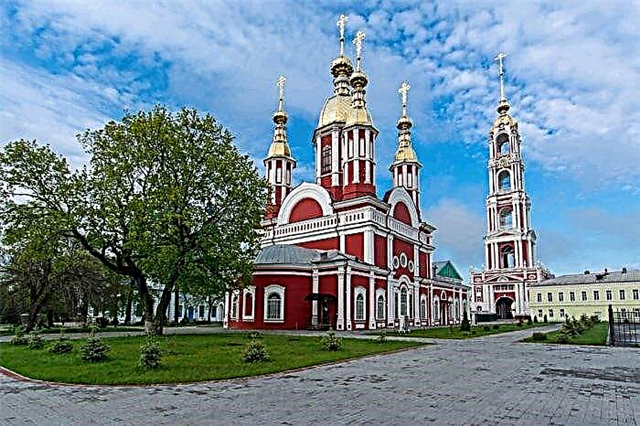
Ascension monastery
The women's monastery is located in Tambov and was founded in 1690. The monastery could have disappeared in the early stages, but since it fully supported itself, it was not closed. It did not function in Soviet times, since 1988 it has been returned to the Russian Orthodox Church. Most of the buildings are modern or heavily modified during the restoration. The Church of the Icon of the Sorrowful Mother of God was built earlier, and the fraternal building is ranked among the monuments of history.

Tsna river
The Moksha tributary has a length of 451 km. There are several cities on it, including Tambov. The river belongs to the calm, passes through flat areas. There are dams on it, the channel is not uniform in width, some sections are used by tourists for seasonal rafting. Shipping is developed, but not everywhere. There are also sights, for example, the holy spring near Treguliai.

Tatar shaft
Refers to the territory of several regions. It was built in the 17th century as a defensive redoubt, necessary to protect against the raids of the Tatars. In the past it was 72 km long, no more than 15 km have survived. Some areas are embossed and clearly visible, others tend to level with the ground. The lack of plowing allowed rare plant species to survive. The shaft has been declared a historical monument.

Church of the Exaltation of the Holy Cross in Tambov
Built at the turn of the 19th and 20th centuries in the neo-gothic style. Confession - Catholicism, at the time of the construction of the parishioners there were a little more than 500. After the revolution, the premises were used for other purposes. Divine services have resumed since 1998. There is also a sculpture by Tsereteli called "St. Nicholas the Wonderworker". Earlier, the monument was abandoned by an Orthodox monastery.

Intercession Cathedral in Tambov
It was first mentioned in the middle of the 17th century. The stone building appeared here more than 100 years later. For some time during the Soviet period it did not function and was a warehouse, but during the war it was returned to the Orthodox. It became the only active cathedral in the district and one of the few in the country. It ceased to be a cathedral in the 90s of the last century after the arrival of the patriarch and the transfer of the relics of Pitirim.

Waterfall on Saval
It can be found in the Zherdevsky area. An atypical phenomenon for the region, as the local rivers are mostly calm and flat. The waterfall was formed thanks to a dam 20 meters wide. Water falls in a stormy stream from a height of 1.5 m. There are many fish, they swim in shallow water or close to the surface. There is enough space on the shore to sunbathe.

Tezikov Bridge
Another name for this Tambov bridge is Pervomaisky. It connects the banks of the Tsna and is a pedestrian one. The bridge is bright, visible from different corners. Nearby sandy beaches and recreation areas. Not only summer cottages, but also a stadium are located nearby. It is especially popular among skiers in winter, although at other times it is also used, for example, as a volleyball court, court or cycle track.

Museum of the History of Medicine of the Tambov Region
Opened since 1978 in Tambov. Most of the fund consists of rare photographs, documents, editions of medical books, specialized magazines, and the like. The exposition also tells about medical equipment and demonstrates some genuine rarities. There are coins, sculpture, graphics and paintings associated with doctors and hospitals. It has the status of a branch of the local history museum.

Memorial complex Tambov-Rada
Dedicated to prisoners of war who were held and died on the Tambov land. After the war, a camp for 60 thousand people was organized here. Natives of many countries served in the fascist army, so that more than 20 nationalities gathered behind the barbed wire. They died of wounds, disease and hunger, and were buried nearby. Already in our time, delegations from different countries have opened small monuments in memory of what happened.

Svyatovskoe lake
Located in the suburbs of Tambov. The area is less than 2.5 hectares. The maximum depth is 20 m. The shape is an almost even circle. It is also called "the lake of riddles". This is due to all sorts of legends from the past and anomalies. There are several tourist routes around. The most popular one includes inspection of 10 main natural objects of the area and has a length of 10 km.


